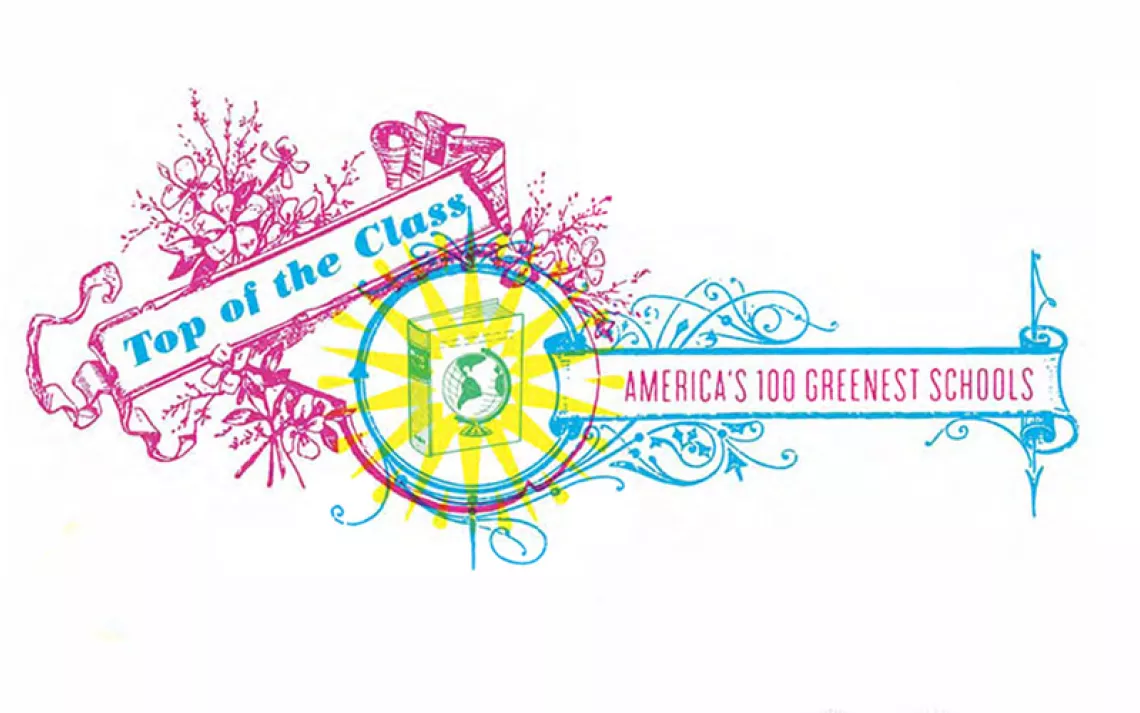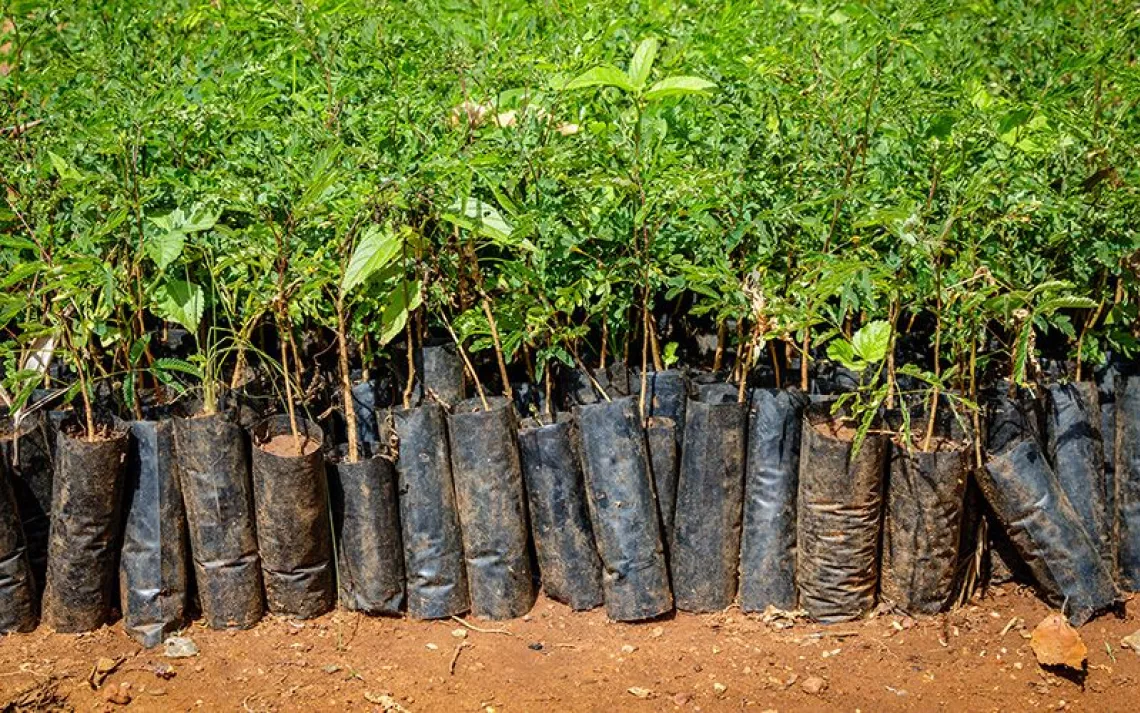The Top 10 Coolest Schools 2015
Sierra Proudly Presents This Year's Eco-Valadictorians

This page has been corrected.
The Complete Ranking: All 153 Schools | Scoring Key | Methodology | FAQ | More Cool Schools
By Avital Andrews

Photo courtesy of Rebecca Gourley/University of Washington
Score: 761.70 | Seattle, WA
UW gets at least 90 percent of its electricity from hydropower and less than 1 percent from coal. The way the school sources its food is notable, too: Every egg is organic and cage-free, and more than half of the food served on campus comes from small local producers, including UW’s own farm. (Above, student farmworkers prepare boxes of campus-grown produce to deliver as part of the school’s community-supported agriculture program.) The university is a member of the Northwest Product Stewardship Council, which pressures food and beverage companies to make their packaging compostable or recyclable. UW also works with a local nonprofit to donate leftover food to hungry people in Seattle.

Photo courtesy of Cameron Browne/Lewis & Clark College
Score: 762.55 | Portland, OR
Lewis & Clark has gone above and beyond in how it manages its waste: In 2014, the school diverted an impressive 513 tons from the landfill. Students have to pay extra if they print more than 650 pages in an academic year, so everyone prints double-sided. Residence halls hold move-out events during which students donate unwanted stuff, and volunteers run an appliance take-back program. The dining halls have audited what they throw away and offer a discount to those who bring in reusable containers. Unused food goes to underserved students at local grade schools. Above, students and staff remove invasive ivy during one of the school’s many community service days.

Photo courtesy of Peter Morenus/University of Connecticut
Score: 766.30 | Storrs, CT
UConn has been in our top 10 repeatedly, thanks in large part to 300 undergraduate and 111 graduate classes that train students to be eco-citizens. Seventy percent of Huskies graduate from a program that makes sure they learn about sustainability. Students can major in horticulture or marine sciences, minor in wildlife conservation or sustainable crop production, and go abroad to study natural resources in China, ecology in South Africa, or the “politics of energy and sustainable development” in Turkey. Above, members of UConn’s EcoHouse learning community hand out potted plants from the student-run farm.

Photo courtesy of University of California, San Diego Housing Dining Hospitality Marketing & Communications
Score: 766.77 | San Diego, CA
Considering California’s drought, UCSD deserves special attention for its efforts to conserve. Since 2009, the campus has reduced its water use by more than 30 million gallons a year, and in the last year has recycled 400,000 gallons. All new landscaping uses drought-tolerant plants. There are many eco-groups on campus, including Aquaholics Anonymous, which hosts water-saving competitions in the dorms. And the EcoNauts (pictured above) hand out reusable water bottles, lead campus “EcoTours,” and teach members of the UCSD community how to live sustainably. More than a third of the school’s fleet is all electric, and 55 vehicles run on biofuel.

Photo courtesy of Samuel Hartman/Oberlin College
Score: 775.95 | Oberlin, OH
“From the 1940s until 2014, the college was heated primarily by burning coal,” Oberlin’s sustainability staff admitted on our survey. But as part of the school’s goal to become carbon neutral by 2025, its heating plant is converting to natural gas “as a transition” while the campus introduces technologies like geothermal heat pumps powered by wind and water. Already, 12 percent of Oberlin’s electricity comes from on-campus solar arrays. In the 19 residence halls, water use is monitored in real time. And faucet aerators, as well as low-flow toilets, urinals, and showerheads, are de rigueur. The culture of conservation is so pervasive that an Oberlin admissions officer decided to bike and bus across the Pacific Northwest while recruiting high school students last fall. Above, students on Oberlin’s Environmental Dashboard team demonstrate how their real-time monitoring program conserves energy and water.

Photo courtesy of Cisco Mora/Colorado State University
Score: 782.90 | Fort Collins, CO
Colorado State scored above average in all 11 of our survey categories—no easy feat—but did especially well in the academic arena: No one graduates eco-illiterate, and the professorial body includes rock stars like Temple Grandin. Out of 58 departments, 54 have at least one class that weaves in green themes, and the school offers 19 sustainability-related majors. In addition, there are university-wide mandates to use recycled paper, to replace old printers with Energy Star ones, and to use green cleaning products. Above, students clear trails as part of CSUnity, a day of service during which thousands of Rams volunteer locally.

Photo courtesy of Doug Sundin/University of Wisconsin–Oshkosh
Score: 786.91 | Oshkosh, WI
UW Oshkosh excels at conserving energy and water: The campus uses 10 million fewer gallons a year than it did in 2012 and gets nearly a fifth of its electricity from wind power. The school’s biodigester turns manure and other compost into 20 percent of the energy needed to heat its buildings. Students voted to tax themselves $3 per semester to fund sustainability projects, and residence halls have designated denizens who enforce recycling. Also factoring into UW’s high score: the student-led Environmental Justice Conference and the school’s Tree Campus USA designation. Above, students volunteer at Growing Oshkosh, an urban agriculture group, as part of a UW class.

Photo courtesy of Karin Higgins/University of California, Davis
Score: 787.46 | Davis, CA
UC Davis’s academic programs stand out for their environmental focus. The school offers nearly 300 undergraduate classes about sustainability, plus specialized institutes, like the Fish Conservation and Culture Laboratory (which just netted $10 million from the U.S. Bureau of Reclamation to study delta smelt). Aggies get ample opportunity for field research and have access to professors who regularly deliver game-changing findings. A third of residence-hall food comes from sustainable sources, and 70 percent of the produce is organic or comes from within 250 miles (or both). Above, senior U Teng Long discusses her energy-efficient lamp design with Michael Michael Siminovitch, who directs the school’s California Lighting Technology Center.

Photo courtesy of Kabria Allen/University of California, Irvine
Score: 867.29 | Irvine, CA
UC Irvine is our first two-time winner. The Southern California school topped this list in 2014 and continues to dominate with strong all-around environmental practices. UCI is especially good at managing its trash (more than 80 percent of campus waste is diverted from landfills), getting energy from clean sources, and encouraging students and employees to step away from the car by offering train rebates, bus-pass discounts, and a free shuttle. In line with the UC system’s goal of becoming carbon neutral by 2025, UCI quadrupled its use of solar power in the past year, adding 11,700 panels in June to reduce its annual carbon emissions by 1,500 metric tons. In March, the school debuted UCI OCEANS, a multidisciplinary effort to save marine life. Above, students in UCI’s global sustainability program harvest cashews on a farm in Costa Rica.
 The Magazine of The Sierra Club
The Magazine of The Sierra Club



